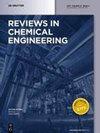Screen-printed electrochemical sensors for environmental monitoring of heavy metal ion detection
IF 6.6
3区 工程技术
Q1 ENGINEERING, CHEMICAL
引用次数: 5
Abstract
Abstract Heavy metal ions (HMIs) are known to cause severe damages to the human body and ecological environment. And considering the current alarming situation, it is crucial to develop a rapid, sensitive, robust, economical and convenient method for their detection. Screen printed electrochemical technology contributes greatly to this task, and has achieved global attention. It enabled the mass transmission rate and demonstrated ability to control the chemical nature of the measure media. Besides, the technique offers advantages like linear output, quick response, high selectivity, sensitivity and stability along with low power requirement and high signal-to-noise ratio. Recently, the performance of SPEs has been improved employing the most effective and promising method of the incorporation of different nanomaterials into SPEs. Especially, in electrochemical sensors, the incorporation of nanomaterials has gained extensive attention for HMIs detection as it exhibits outstanding features like broad electrochemical window, large surface area, high conductivity, selectivity and stability. The present review focuses on the recent progress in the field of screen-printed electrochemical sensors for HMIs detection using nanomaterials. Different fabrication methods of SPEs and their utilization for real sample analysis of HMIs using various nanomaterials have been extensively discussed. Additionally, advancement made in this field is also discussed taking help of the recent literature.用于环境监测的丝网印刷电化学传感器重金属离子检测
摘要重金属离子(hmi)对人体和生态环境造成严重危害。考虑到目前的警情,开发一种快速、灵敏、鲁棒、经济、方便的检测方法至关重要。丝网印刷电化学技术为这一任务做出了巨大贡献,并引起了全球的关注。它使质量传输速率和演示控制测量介质的化学性质的能力。此外,该技术还具有线性输出、快速响应、高选择性、灵敏度和稳定性、低功耗和高信噪比等优点。近年来,最有效和最有前途的方法是将不同的纳米材料掺入spe中,从而提高了spe的性能。特别是在电化学传感器中,纳米材料的掺入以其具有电化学窗口宽、比表面积大、电导率高、选择性和稳定性等特点而受到广泛关注。本文综述了纳米材料丝网印刷电化学传感器在人机界面检测方面的最新进展。本文对不同纳米材料制备SPEs的方法及其在hmi实际样品分析中的应用进行了广泛的讨论。此外,本文还结合近年来的文献讨论了该领域的研究进展。
本文章由计算机程序翻译,如有差异,请以英文原文为准。
求助全文
约1分钟内获得全文
求助全文
来源期刊

Reviews in Chemical Engineering
工程技术-工程:化工
CiteScore
12.30
自引率
0.00%
发文量
37
审稿时长
6 months
期刊介绍:
Reviews in Chemical Engineering publishes authoritative review articles on all aspects of the broad field of chemical engineering and applied chemistry. Its aim is to develop new insights and understanding and to promote interest and research activity in chemical engineering, as well as the application of new developments in these areas. The bimonthly journal publishes peer-reviewed articles by leading chemical engineers, applied scientists and mathematicians. The broad interest today in solutions through chemistry to some of the world’s most challenging problems ensures that Reviews in Chemical Engineering will play a significant role in the growth of the field as a whole.
 求助内容:
求助内容: 应助结果提醒方式:
应助结果提醒方式:


